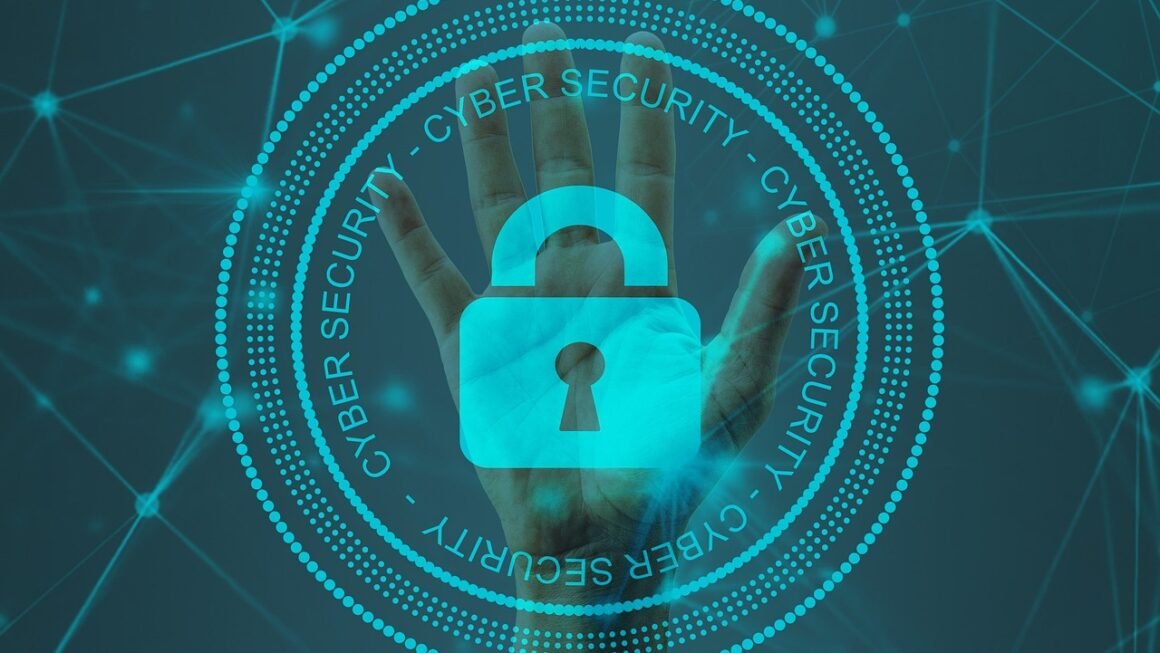Imagine your business as a heavily fortified castle. You’ve built walls (firewalls), moats (intrusion detection systems), and drawbridges (authentication methods). But are there cracks in the walls you haven’t seen? Are there secret tunnels an attacker could exploit? A security audit is your comprehensive assessment of these defenses, identifying vulnerabilities and ensuring your castle, or your business, remains secure. This process isn’t just about ticking boxes; it’s about proactively strengthening your security posture against the ever-evolving threat landscape.
What is a Security Audit?
A security audit is a systematic and comprehensive evaluation of an organization’s security controls, policies, and procedures. Its primary goal is to identify vulnerabilities, assess risks, and ensure compliance with relevant regulations and industry standards. Think of it as a health check-up for your organization’s security.
The Core Components of a Security Audit
- Vulnerability Assessment: Identifying weaknesses in your systems, applications, and network infrastructure. This includes scanning for outdated software, misconfigured settings, and other known vulnerabilities.
- Risk Assessment: Evaluating the potential impact of identified vulnerabilities. This involves determining the likelihood of exploitation and the potential damage it could cause. For example, a vulnerability in your customer database might be considered a high risk because a breach could lead to significant financial and reputational damage.
- Compliance Assessment: Ensuring adherence to relevant regulations and industry standards, such as GDPR, HIPAA, PCI DSS, and ISO 27001. Non-compliance can result in hefty fines and legal repercussions.
- Policy and Procedure Review: Assessing the effectiveness of your security policies and procedures. This includes reviewing access control policies, incident response plans, and disaster recovery procedures.
- Security Control Testing: Testing the effectiveness of your security controls. This can involve penetration testing, where ethical hackers attempt to exploit vulnerabilities in your systems, or social engineering tests, where employees are targeted to assess their susceptibility to phishing attacks.
Benefits of Regular Security Audits
- Enhanced Security Posture: Proactively identifying and addressing vulnerabilities before they can be exploited.
- Improved Compliance: Ensuring adherence to relevant regulations and industry standards.
- Reduced Risk: Minimizing the likelihood and impact of security incidents.
- Increased Trust: Demonstrating a commitment to security to customers, partners, and stakeholders.
- Cost Savings: Preventing costly data breaches and associated damages. A study by IBM found that the average cost of a data breach in 2023 was $4.45 million.
- Better Resource Allocation: Identifying areas where security investments are most needed.
Types of Security Audits
Security audits aren’t a one-size-fits-all solution. Different types cater to specific needs and focus on different aspects of your organization’s security.
Internal vs. External Audits
- Internal Audits: Conducted by your own employees or a dedicated internal audit team. They provide an in-depth understanding of your organization’s security practices but may be subject to bias. These audits are often less formal and more frequent, focusing on continuous improvement.
- External Audits: Performed by independent third-party security firms. They offer an objective assessment of your security posture and are often required for compliance with certain regulations. External audits provide a fresh perspective and a more formal, rigorous evaluation. A common example is a SOC 2 audit performed by a certified public accountant.
Specific Audit Types
- Network Security Audit: Focuses on the security of your network infrastructure, including firewalls, routers, switches, and wireless access points. This audit assesses the configuration and effectiveness of network security controls.
- Web Application Security Audit: Examines the security of your web applications, identifying vulnerabilities such as SQL injection, cross-site scripting (XSS), and cross-site request forgery (CSRF).
- Database Security Audit: Assesses the security of your databases, ensuring that sensitive data is protected from unauthorized access. This includes reviewing access controls, encryption, and data masking techniques.
- Physical Security Audit: Evaluates the physical security of your facilities, including access control, surveillance systems, and environmental controls. For example, an audit would examine if keycard access systems are functioning and if surveillance cameras are strategically placed and properly maintained.
- Cloud Security Audit: Assesses the security of your cloud infrastructure and applications, ensuring that data is protected and compliant with relevant regulations. This includes reviewing cloud configuration settings, access controls, and data encryption.
The Security Audit Process: A Step-by-Step Guide
Conducting a security audit is a multi-stage process that requires careful planning and execution. Here’s a breakdown of the key steps:
1. Planning and Scope Definition
- Define the scope of the audit: Determine which systems, applications, and processes will be included in the audit. A clear scope helps to focus the audit and ensure that all relevant areas are covered.
- Identify objectives and goals: Define what you want to achieve with the audit. Are you aiming to comply with a specific regulation, improve your security posture, or reduce risk?
- Select an auditor: Choose an auditor with the necessary expertise and experience. Consider their certifications, industry knowledge, and reputation. For example, if you need to comply with PCI DSS, you’ll need to hire a Qualified Security Assessor (QSA).
- Develop a timeline: Create a realistic timeline for the audit, taking into account the scope and complexity of the engagement.
2. Data Collection and Analysis
- Gather relevant documentation: Collect policies, procedures, network diagrams, configuration settings, and other relevant documents.
- Conduct interviews: Interview key personnel to gather information about security practices and processes.
- Perform vulnerability scans: Use automated tools to scan for known vulnerabilities in your systems and applications.
- Conduct penetration testing: Simulate real-world attacks to identify exploitable vulnerabilities. A penetration test might involve trying to bypass security controls, escalate privileges, or access sensitive data.
- Analyze data: Review the collected data to identify vulnerabilities, risks, and compliance gaps.
3. Reporting and Remediation
- Prepare a detailed report: Document the findings of the audit, including identified vulnerabilities, associated risks, and recommendations for remediation. The report should be clear, concise, and actionable.
- Prioritize remediation efforts: Focus on addressing the most critical vulnerabilities first. This is often determined by a risk rating system (e.g., High, Medium, Low).
- Develop a remediation plan: Create a plan for addressing each identified vulnerability, including timelines, responsibilities, and required resources.
- Implement remediation actions: Implement the remediation plan, fixing vulnerabilities and improving security controls. For example, patching outdated software, hardening system configurations, and implementing stronger access controls.
- Validate remediation efforts: Verify that the remediation actions have been effective in addressing the identified vulnerabilities. This can involve re-testing the systems or applications after remediation.
Choosing the Right Security Audit Framework
There are several security audit frameworks available, each with its own strengths and weaknesses. Selecting the right framework is crucial for ensuring the effectiveness of your audit.
Popular Frameworks
- NIST Cybersecurity Framework (CSF): A widely used framework that provides a comprehensive set of guidelines for managing cybersecurity risk. It’s flexible and adaptable to different organizations.
- ISO 27001: An international standard for information security management systems (ISMS). Achieving ISO 27001 certification demonstrates a commitment to security and can enhance trust with customers and partners.
- PCI DSS: A set of security standards for organizations that handle credit card data. Compliance with PCI DSS is mandatory for businesses that accept credit card payments.
- SOC 2: A reporting framework developed by the American Institute of Certified Public Accountants (AICPA) for evaluating the security, availability, processing integrity, confidentiality, and privacy of service organizations.
- HIPAA: A U.S. law that protects the privacy and security of protected health information (PHI). Compliance with HIPAA is mandatory for healthcare providers and organizations that handle PHI.
Factors to Consider When Choosing a Framework
- Industry regulations: Are you required to comply with any specific regulations or standards? (e.g., HIPAA for healthcare, PCI DSS for e-commerce)
- Business objectives: What are you trying to achieve with the audit? (e.g., improve security posture, reduce risk, comply with a specific standard)
- Organizational size and complexity: Choose a framework that is appropriate for the size and complexity of your organization.
- Resources: Do you have the resources to implement and maintain the chosen framework?
- Customer requirements: Do your customers require you to comply with any specific security standards?
Maintaining Security After the Audit
A security audit is not a one-time event. It’s an ongoing process of continuous improvement. Once an audit is complete and vulnerabilities have been remediated, it’s essential to establish processes for maintaining security over time.
Key Practices for Ongoing Security
- Regular Vulnerability Scanning: Implement automated vulnerability scanning tools to continuously monitor your systems for new vulnerabilities. Schedule regular scans and address identified vulnerabilities promptly.
- Penetration Testing: Conduct periodic penetration tests to simulate real-world attacks and identify exploitable vulnerabilities.
- Security Awareness Training: Provide regular security awareness training to employees to educate them about common threats, such as phishing and social engineering.
- Incident Response Planning: Develop and maintain an incident response plan to guide your organization’s response to security incidents.
- Patch Management: Implement a robust patch management process to ensure that software and systems are kept up to date with the latest security patches.
- Access Control: Implement strong access control policies and procedures to limit access to sensitive data and systems.
- Security Monitoring: Implement security monitoring tools to detect and respond to suspicious activity.
- Regular Policy Reviews: Review and update security policies and procedures regularly to ensure that they remain relevant and effective.
Conclusion
A security audit is a critical investment in the protection of your organization’s assets and reputation. By proactively identifying and addressing vulnerabilities, you can significantly reduce the risk of data breaches, compliance violations, and other security incidents. Remember that security is an ongoing process, not a one-time event. By implementing the recommendations from your security audit and establishing robust security practices, you can create a more secure and resilient organization. Regularly scheduled audits are a cornerstone of a proactive cybersecurity strategy and are essential for maintaining a strong security posture in today’s dynamic threat landscape.



